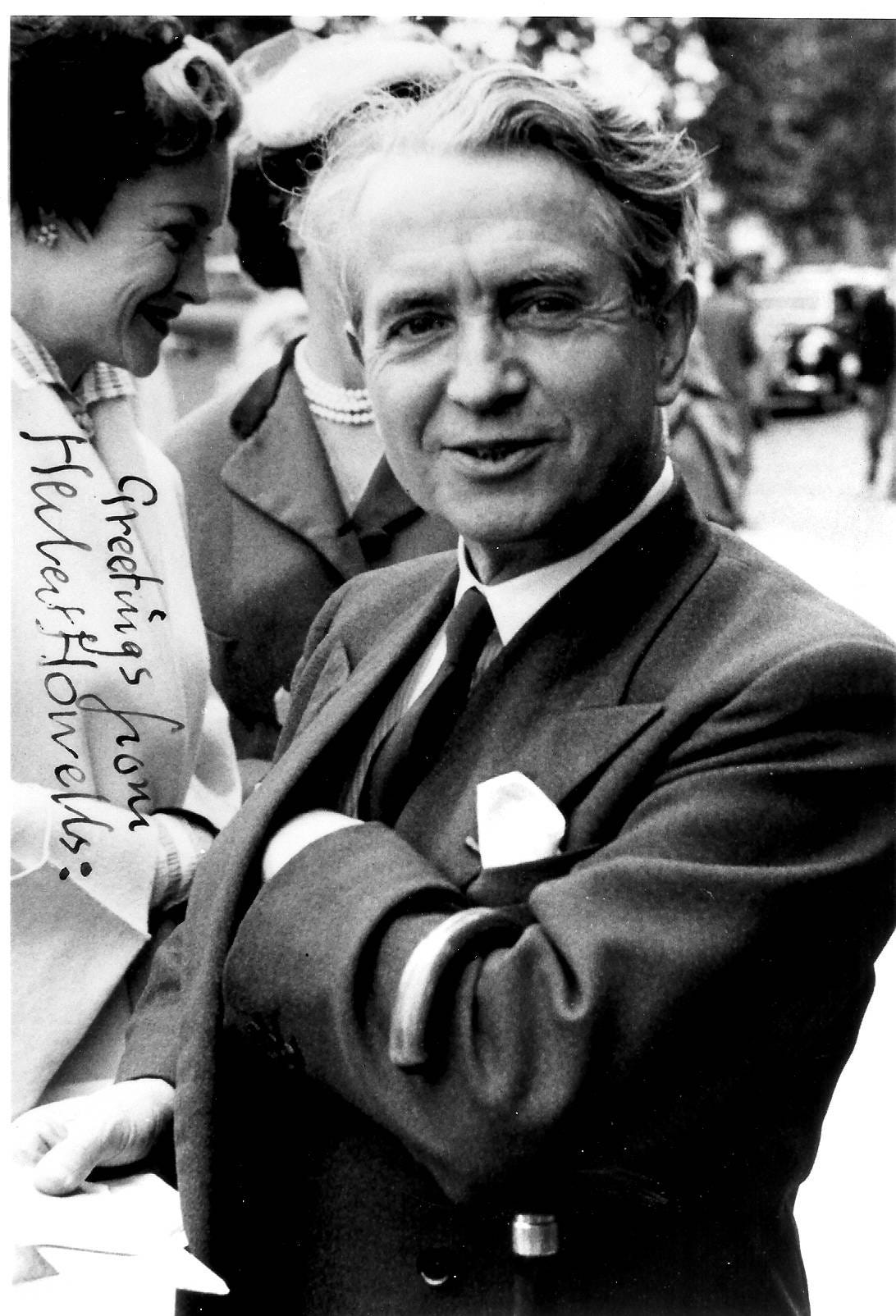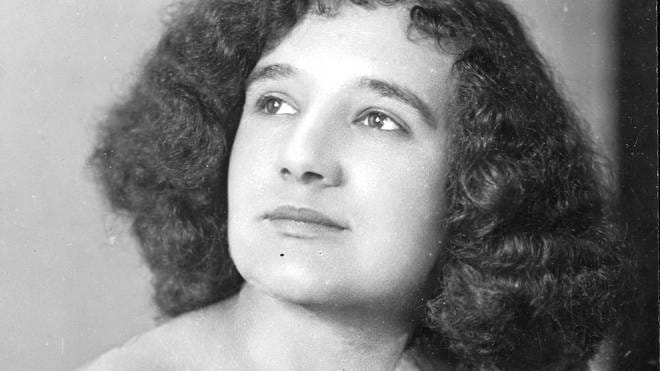Why Howells? Why now?
Forty years after his death, why is this often-overlooked British composer the subject of my PhD?
I had possibly one of the most unconventional introductions to Herbert Howells’s music; it took me seven years to go from first hearing his music to actively exploring it.
In the summer of 2011, I was in London before embarking on the final year of my A level studies. We were going to be studying Elgar’s first symphony as our set work and, naturally, jumped at the chance to hear it live at the Proms. Accompanying this piece was a work by a composer I’d never heard of, Hymnus Paradisi by Herbert Howells. Now, I’m ashamed to say, that due to a misjudgment, I arrived halfway through the first half, missing most of Hymnus. I wasn’t particularly captivated by the piece, but I remembered the Sanctus. The Elgar was much more significant to me then.
Fast forward to May 2018: I am a final-year undergrad in my final term. The University choir is rehearsing for its summer concert of twentieth-century British choral works, including Britten and Finzi. Halfway through the rehearsal process, our conductor added in the motet Come, My Soul, by Herbert Howells. Upon receiving the sheet music I thought, ‘oh yeah, he wrote that cool Sanctus’ and was quite open-minded to what this piece might be like. After a (quite) scrappy sightread through, I was utterly captivated. The way Howells had taken the John Newton text and turned it into this quietly intense and restless piece of music left me stunned - the closing bars of the piece (‘Lead me to my journey’s end’) are still as spine-tinglingly moving as they were the first time I sang them. However, even after this, I didn’t actively start seeking out Howells’s music.
Arriving in Cambridge later that year and having never sung evensong before, I was certainly at a disadvantage for not knowing the standard diet of Howells most choral scholars had. Luckily for me, this was quickly rectified, as it is near impossible to walk down any street in central Cambridge in the later afternoon and not hear the idiosyncratic sound world of Howells’s music wafting out of another college chapel. Within the first term I had sung nearly all the pieces you would expect: Collegium Regale and Gloucester services, Like as the Hart, O Pray for the Peace of Jerusalem, and at least five performances of A Spotless Rose. While initially, I enjoyed performing those pieces, I couldn’t help but wonder if there was more to this composer than just these pieces. I’d finally caught the Howells bug.
Fortunately, my coursemate and now-friend Harold had spent a good part of his undergraduate degree in Glasgow researching Howells’s music. Whenever I have written about Howells I have acknowledged the many invaluable late nights with a speaker – and sometimes a score – discussing Howells’s music with Harold. I certainly wouldn’t be where I am now without them. I quickly began to appreciate a whole other side to this composer, and almost religiously would listen to his music when walking around town or while working.
A regular topic of conversation was the many choral works Howells composed in his later life and Philip Cooke’s article proposing that this constituted a late style, an idea both Harold and I disagreed with. Harold has written concisely about this issue here, and I would recommend it to anyone who has read The Music of Herbert Howells or has an interest in expanding their knowledge of this composer’s music. The issues around this persisted in my brain for a long time, enough so that I found myself in Newcastle University post-pandemic writing about it in no less than 25,000 words. Having spent most of the pandemic enveloped in novels, returning to research very quickly reignited a love for what I was doing. It wasn’t long before I was sat on zoom with various people discussing the prospects of PhD applications.
And this is where we arrive now. I am (terrifyingly) nearing the end of my first year of PhD study investigating Howells’s Stabat Mater. This leads quite nicely back to this post’s title: Why Howells? Why now?
Why Howells?
I’ve had to stand up in a room a number of times in the last two years and introduce myself and my research, normally with other postgraduate students. Nearly every time this happens it fills me with dread. In the twenty first century, it feels almost embarrassing to declare your interest for researching a dead white man, and a problematic one at that. You can sometimes hear the eye rolling quality in people’s voices when they politely respond, ‘oh cool, sounds interesting.’ However, it wasn’t until earlier this year that I really managed to work out ‘Why Howells?’, and it was thanks to one of the RCM’s research training sessions, lead by Dr Sarah Whitfield.
Sarah was leading a session on Critical Race Theory, something I’ve always found very engaging but only knew the basic texts of. One of the objectives of the session was what we could learn from Critical Race Theory and apply to our own research, regardless of what we were researching. It was hearing Sarah and my peers speak that made me realise that my research wasn’t about Howells and his importance to musical history; I was arguing that the contribution of many British composers is due a reevaluation and Howells’s Stabat Mater is just one example of this. It was then that I realised I could (and should) apply the same ideas to other composers, especially marginalised and minoritised ones. This is in part where this blog/newsletter comes in; it gives me a space to share research on the lives and music of many composers who intersect with, or simply existed at the same time as, Howells.
On the back of this seminar, I spent a few days in the RCM’s archive researching the music of Avril Coleridge-Taylor, a composer and conductor who is, quite rightly, gaining a lot of focus at the moment. A recent catalogue of works by Dr Leah Broad shows how little her work is not recorded and performed. She is an incredibly interesting and complex woman whose music can offer an interesting insight into race in Britain in the twentieth century. This is also partially what inspired the composer catalogue playlists I make on Spotify. This started as a personal tool for getting to know Howells's music but has since grown into making playlists of other composers’ music in chronological order. Avril's playlist only contains two works. It serves as a reminder of how much of this music (admittedly, available on Spotify), is yet to be recorded. These are my small contributions to highlighting the work of many composers that I feel deserve much more attention than they’re currently given.
The embarrassment that I once felt announcing my research has melted away. I now introduce the area of my research as ‘British music post-1945, with a focus on Howells’s Stabat Mater’. Howells is a prime example of a composer that has become pigeonholed and misunderstood, and I hope that through studying and highlighting him and his music, and the work of other composers, we can begin to appreciate the full contributions he made to the development of British music.
Why now?
A recurring theme of recent scholarship about English composers has been the reevaluation of their output and what effect it had on musical history and culture more broadly. Howells’s music has always remained popular in the church, the medium he is most known for, but there is a growing trend in exploring his instrumental and choral-orchestral works. So far this year there has already been a phenomenal new recording of the Concerto for String Orchestra and the lesser-known choral work, the Westminster Service. As we begin to explore his output beyond the pieces that have given him longevity in choral circles, we also begin to learn an awful lot more about Howells himself and his approaches to composition and teaching.
I, like many, turned to Paul Spicer’s biography on Howells when I first became interested in his music. It still provides a thought-provoking starting point nearly twenty-five years on, not least for understanding how his daughter saw him (or wanted us to view him). However, the interviews with Ursula Howells, alongside Spicer’s own bias (he was a composition pupil of Howells at the RCM) are worth being approached cautiously. As historian Jolanta T. Pekacz points out:
“Biography is not transparently representational, but moral and political; it is a construction—not a reconstruction—of its subject’s life.”
Spicer’s biography paints a particular image of Howells, highlighting his work beyond composition, certain areas of his personal life, and drawing our attention to the more obscure works. However, for instance, his reference to the end of Howells’s compositional career as a ‘coda’ was one of the things that spurred me into arguing these pieces had a greater significance. There are still areas of Howells’s life and compositions that need researching further if we are to understand them, and this composer, fully.
This year marks forty years since Howells died. It also marks ten years since The Music of Herbert Howells was published, the only collection of essays focused on this composer. Since then there has been research conducted by students and academics, and this is why now feels like the right time to be asking about Howells’s music beyond the church, like the choral-orchestral works which have received surprisingly little thorough analysis or interpretation academically. I felt the momentum to carry on my research after my MLitt partly because of this wider interest in reevaluating Howells’s significance to British musical history, alongside the same approaches being applied to other more marginalised British composers (see the book Quartet by Leah Broad as an excellent recent example of this). Hopefully this momentum will only increase as my studies continue.
I hope this has at least, in part, answered the two questions I posed at the beginning. They’re questions I’m regularly asking myself and the answers, naturally, are always changing and developing. This newsletter will be a way of foregrounding many underrepresented composers and their music, which I hope will encourage people to explore further.
I’m grateful for the feedback from Dr Sarah Whitfield on parts of this post.





